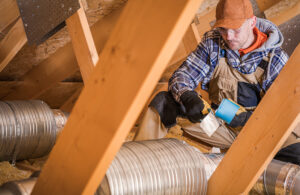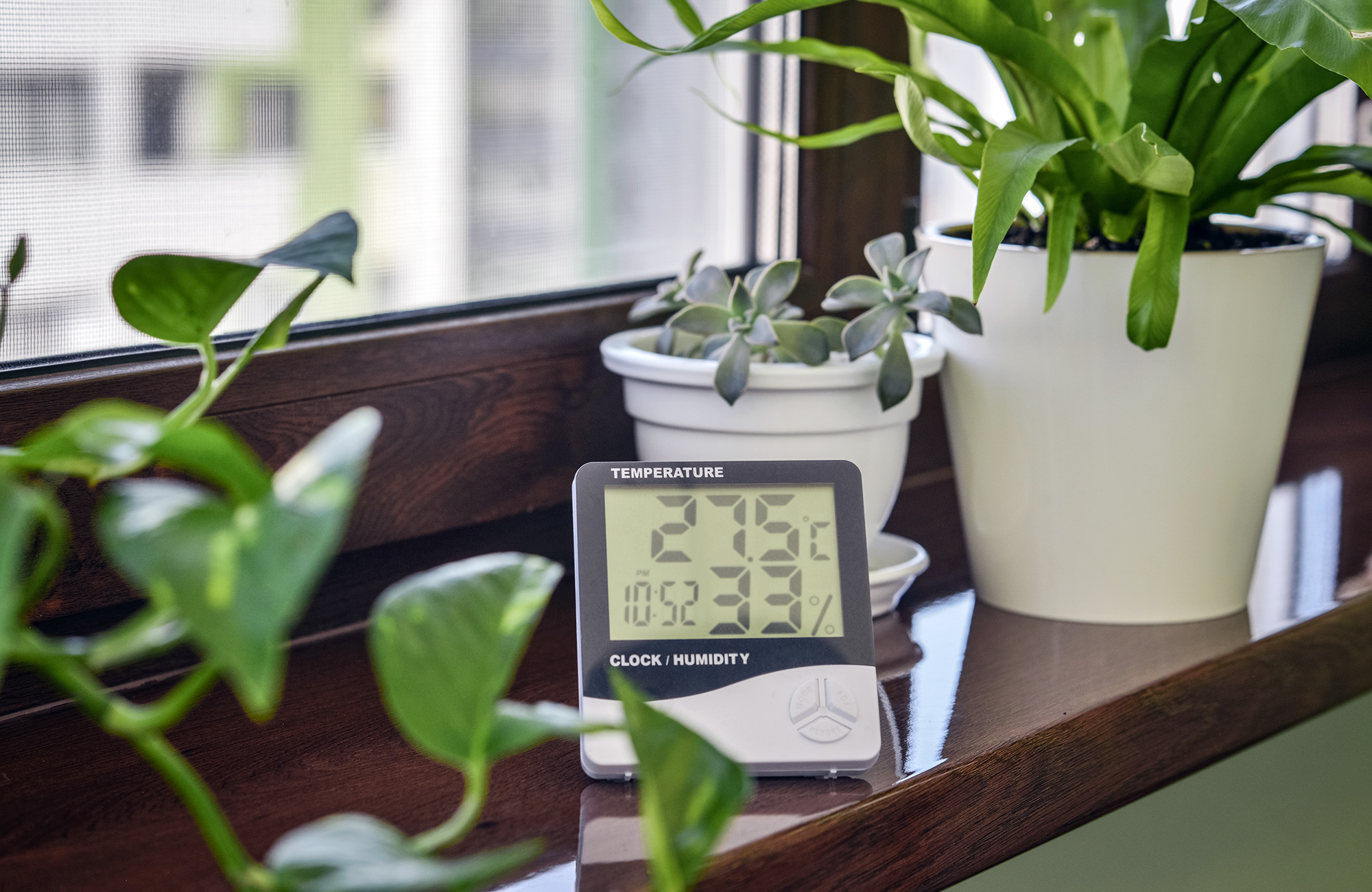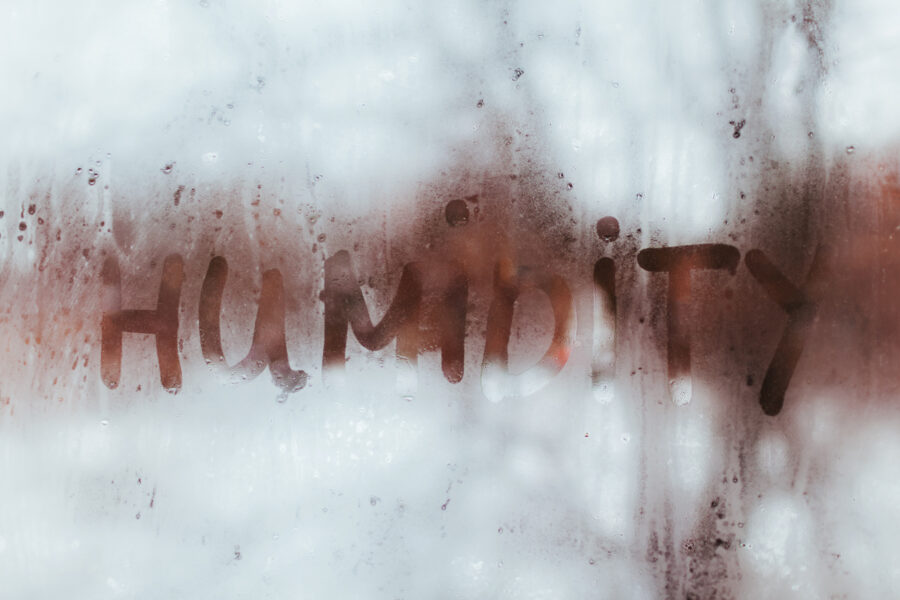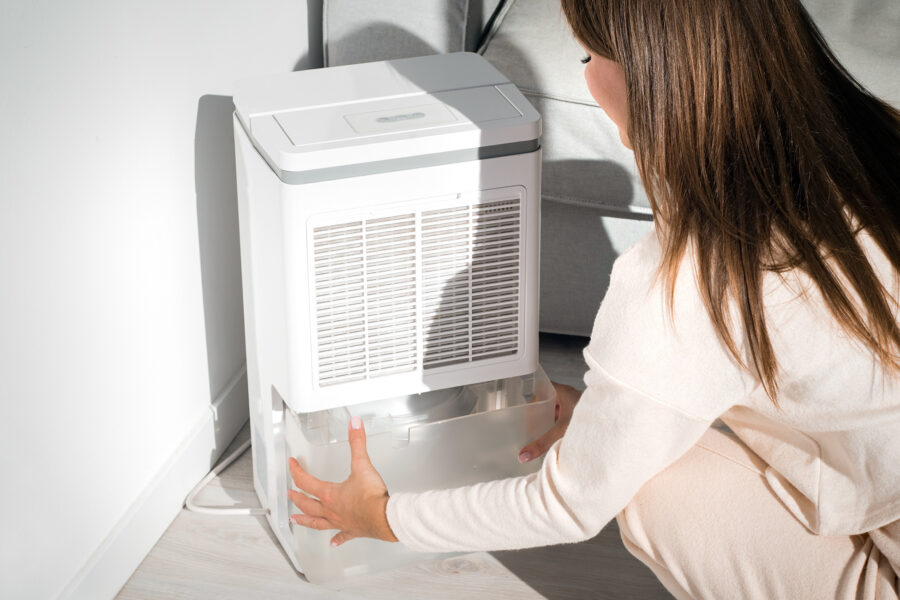Why is the humidity so low in my house? If your home has low humidity levels, you may find yourself with dry and itchy skin, or experiencing small electric shocks between you and family members. Humidity levels that are too low can cause damage to your furniture, your home, and your health.
What Does Low Humidity Mean?
High humidity means there is excess moisture in the air. Low humidity is the opposite of that. It is when there is not enough moisture or water vapor in the air, making it feel dry. A rule of thumb for low humidity is when the humidity level is below 40 percent.
Why is the Humidity so Low in my House?
Humidity plays a crucial role in the comfort of a home. When humidity is too high, it can cause skin irritation, allergies, sleep disruption, and even structural damage to the house. In contrast, low humidity can also have adverse effects.
To counteract low humidity, it is important to know why it happens in the first place. What causes low humidity in a house? Here are the most common culprits.
1. Cold Weather
During winter, there is less moisture in the air outside. When this cold and dry air seeps into a home and is heated, the relative humidity goes down further. As a result, homeowners often experience drier air indoors during the colder months.
 2. Excessive Heating
2. Excessive Heating
Heating systems, especially forced-air furnaces, tend to dry out indoor air by lowering the moisture levels. While these systems warm up the home efficiently, they can also contribute to significantly lower humidity levels.
3. Poor Ventilation
Improper ventilation can lead to imbalanced indoor air quality, which includes low humidity. Homes that are too airtight don’t allow for the natural exchange of air, which can result in reduced moisture levels over time.
4. Air Conditioning
Air conditioning removes excess heat and humidity from the air. While this is beneficial in hot and humid climates, running an air conditioner too frequently or at a setting too high can strip too much moisture from the indoor air, leading to dryness.
5. Dehumidifiers
While dehumidifiers are helpful in areas with excessive moisture, using them too much or too often can dry out the air. Homeowners should be careful not to run their dehumidifiers too long to avoid uncomfortable dryness.
 6. Leaky Ductwork
6. Leaky Ductwork
Leaks in an HVAC system’s ductwork can cause humidity levels to fluctuate. If warm, moist air escapes through leaks before reaching the intended areas of the home, the result can be drier indoor air.
7. Lack of Moisture-Generating Activities
Everyday activities like cooking, showering, and using a clothes dryer can contribute to indoor humidity. If you don’t usually take part in these activities for too long or if you use exhaust fans, the home may experience low humidity levels.
8. Type of Building Materials
Building materials like drywall and hardwood can absorb and release moisture. If a home is built with materials that don’t retain moisture well, it may struggle to maintain healthy humidity levels.
9. Geographic Location
Homes in naturally dry climates, such as deserts or high-altitude regions, are likelier to experience low indoor humidity. These areas have lower moisture levels year-round.
 10. Overuse of Exhaust Fans
10. Overuse of Exhaust Fans
Kitchen and bathroom exhaust fans remove excess moisture from the air. Excessive or prolonged use of these fans can lower humidity levels too much, leading to drier conditions. Homeowners should only turn on these fans when necessary.
Signs of Low Humidity in Home
For those of us who live in colder climates like Chicagoland, dry air is something you are definitely familiar with. On the other hand, if you are in a warmer climate, you might not know the signs of low humidity or how it can pose threats to your family and your home.
Common symptoms of low humidity in the home are as follows:
- Dry and itchy skin
- Static electricity
- Susceptibility to illnesses (viruses and germs thrive more easily, and your defenses are compromised in overly dry air)
- Damage to wood furniture, musical instruments, and art as air pulls moisture from the porous material
Further, dramatic fluctuations in humidity levels can intensify the effects of low and high humidity.
What Does Low Humidity Do?
When humidity levels are too low in a home, you might experience several health effects. The first one is dry skin. Because the air surrounding you is too dry, your skin may lack enough moisture to keep it supple. This dryness can also lead to skin irritation.
The second is respiratory discomfort. Dry air can make breathing harder and irritate the lining of your nose and throat, making them feel scratchy.
The third effect is eye irritation. Low humidity levels can cause dry eyes, forcing you to blink more. This will irritate your eyes, and you might even find yourself scratching them.
Finally, low humidity can make you more vulnerable to illnesses. This is because dry air promotes the spread of airborne viruses. You also become more susceptible because the humidity dries out your nasal passages.
If the Humidity is Low, What Does it Mean?
Low humidity occurs most often when the temperature outside starts to drop. Colder air means that the air cannot hold as much moisture, which results in that dry feeling you get. Forced heat, combined with low moisture, can create uncomfortable living spaces.
However, low humidity doesn’t just happen in colder temperatures. Some air conditioning units have dehumidifiers built into the system. These can cause low humidity if the air conditioner runs too much or the settings are incorrect.
How to Increase Humidity in Your Home
Now that you know why the humidity is so low in my house, you can work to fix it. The most effective solution to adding humidity to a room is to purchase a room humidifier. Any portable humidifier will provide your home with more comfort and is cost-effective.
Additionally, a humidifier will prevent your room’s furniture from getting damaged and stop static electricity from occurring. Believe it or not, it will also hinder the growth of bacteria – viruses and bacteria that like dry air.
Another way to increase your home humidity levels is to run the shower briefly to allow steam to moisten the air. You can also boil water, or place several room-temperature bowls of water around your home. It will slowly evaporate, adding more moisture to the air. Additionally, some houseplants add moisture to the air.
When you improve the humidity level in your home, you can:
- Keep your sinuses clear, which helps you breathe
- Reduce the risk of infection
- Alleviate dry skin
- Prevent those with asthma and allergies from further discomfort
- Keep nasal passages damp to help them heal quicker
- Relieve snoring and improve sleep
Why is the Humidity so Low in my House? Answered!
Low humidity in a home can stem from several factors, including seasonal weather changes and excessive heating. When you understand what causes low humidity, you can take proactive steps to prevent it and maintain a comfortable space.
Hillcrest provides expert HOA management services, including help with yard rules. Call us today at 630-627-3303 or contact us online to request a proposal!
RELATED ARTICLES:
- Home Humidity Chart And What Homeowners Should Know About Humidity
- HOA vs Property Management: Clearing Up The Misunderstanding
- HOA Spring Maintenance Checklist: Key Tasks For The HOA Board




